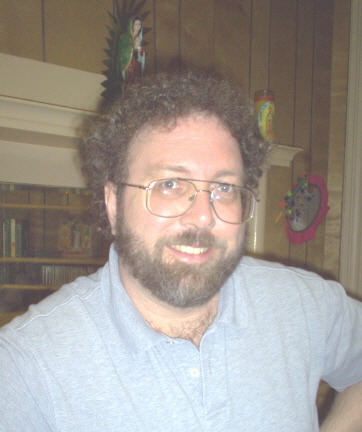The communications
department at the College of Charleston has a religious apparitions
enthusiast in Robert Westerfelhaus, whose dissertation and current
research analyze sightings of the Virgin Mary and religious kitsch.
Westerfelhaus
says that according to popular Catholic piety, the Virgin Mary has
appeared in various parts of the world. Around the world, from Brazil
to Mexico, from Portugal and France to
Bosnia there are shrines to the Virgin Mary, where she is said to have
appeared. "When someone claims to have experienced… a vision, and is
believed by enough people and/or endorsed by the Church," Westerfelhaus
states in his dissertation. "The place where the Blessed Virgin is said
to have manifested Herself is defined as a sacred site."
She typically appears to small children and to those who least expect
it. In Fatima, Portugla for instance, Mary, in 1917, was said to
have appeared to
three young girls. Today she is represented in "kitschy" plastic and
plaster statues representative to each culture. Westerfelhaus adds that
"kitsch" is literally German for trash.
"Within the Catholic tradition, art is not only used to inspire worship," he says. "But it is also used as a means of...communication" between living and deceased Catholics. Statues of saints and the Virgin Mary are mechanisms to inspire worship. Westerfelhaus says that kitsch can be seen everywhere from cowboy boots to biceps. "Such objects derive religious significance from what they represent, and not from their aesthetic worth or the value,” he says.
Westerfelhaus' mother
was a devout Catholic, but Westerfelhaus himself feels that he found
his faith "sometime in grad school." He says was going to do his
dissertation on Cold Springs, Ky. where children are reported to have
seen a woman who called herself Mary. "They practically shut down the
town," says Westerfelhaus, because Mary was said to appear at a certain
time. Later, he decided to focus his research on Our Lady of Guadalupe,
visiting the famous shrine in Mexico to further his studies.
Westerfelhaus explains
that Our Lady of Guadalupe is "a popular version of the Blessed Virgin
Mary." The story is that a man named Juan Diago experienced seeing a
woman a number of times who claimed to be the Mother of God. She
told him to go to the bishop and tell him to build a church on top of a
hill. The bishop did not believe him so the woman who called herself
the Mother of God told Diago to gather flowers in his cloak and give
them to the bishop. There shouldn’t have been any flowers because it
was out of season, but there were. When Juan Diago opened his cloak to
the bishop the flowers fell out and there was an image of the woman in
the cloak. The image is still on the cloak today. Our Lady of
Guadeloupe appears in kitsch art as an Aztec princess.
"No Catholic is bound to believe in [sightings known as apparitions],"
says Westerfelhaus. "But today visits by Catholics to Mexico City to
see Her are second only to the Vatican."
In his office you can find a statue of this figure, and Westerfehaus
explains her clothing and characteristics of the statues and how it
relates to Aztec culture. When he speaks his enthusiasm for his
research is apparent. "He is very thoughtful so when he speaks
you listen," says fellow communications professor, Beth Goodier.
Westerfelaus is also experienced in the classes he teaches in ethics,
communication theory, and rhetoric. "He definitely
knows what he's talking about," says Sophomore Tiffany Stevenson. "And
I like his laid back style."
Goodier considers her
colleague "an excellent scholar, very knowledgeable."
Westerfelaus received his B.A. in public relations from Ohio Dominican
University. He then went on to earn his Ph.D. and M.A. from Ohio
University.
More on Dr. Robert
Westerfelhaus can be found at: https://www.cofc.edu/communication/faculty/bios/westerfelhaus.html

Department of Communication